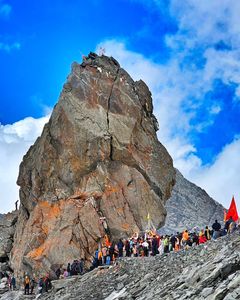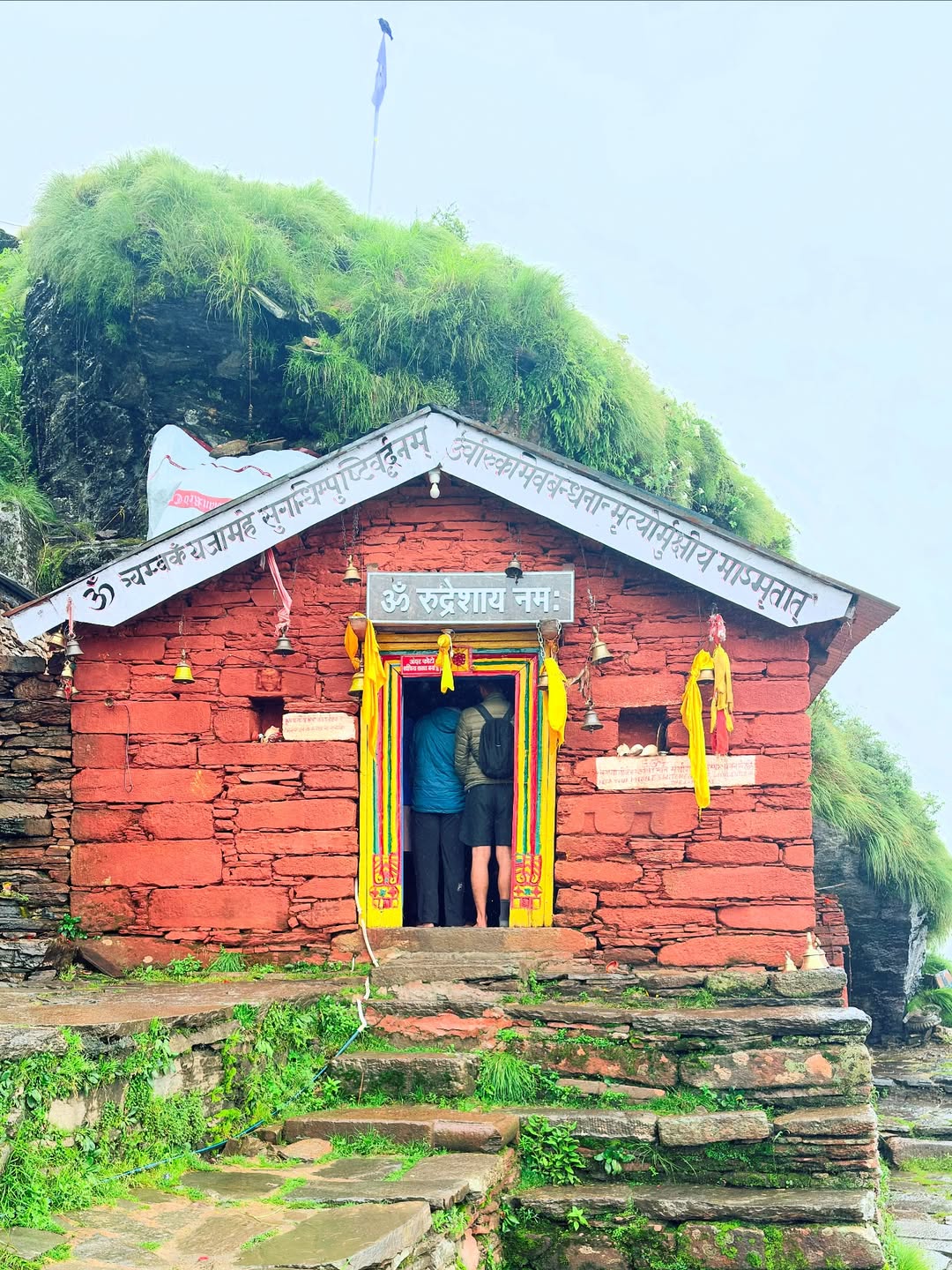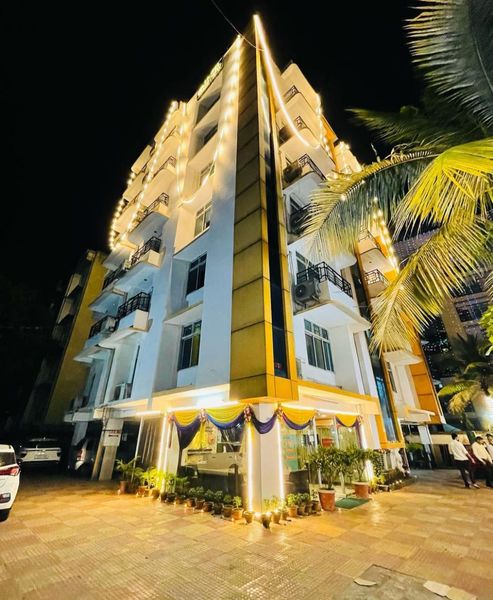Sacred but Untamed: 6 Mountain Pilgrimages You’ve Probably Never Heard Of
 Deepanshu Negi
08 Aug, 2025
10 mins read
43
Deepanshu Negi
08 Aug, 2025
10 mins read
43

Far from the crowded ghats and concrete shrines, the Himalayas cradle ancient pilgrimages still whispered through winds and snow. These sacred routes are not just trails they’re spiritual tests shaped by silence, solitude, and the untamed beauty of the high mountains. Here, devotion is not performed, it is endured. Each journey is more than a destination; it’s a deeply personal encounter with the divine raw, unfiltered, and unforgettable.
Here are six lesser-known but deeply revered mountain pilgrimages that few undertake, yet none forget.
1. Adi Kailash and Om Parvat, Kumaon
In the farthest reaches of Uttarakhand’s Kumaon region lies Adi Kailash, often known as Chhota Kailash, a sacred peak mirroring the grandeur of Mount Kailash. The journey winds through remote tribal villages like Kuti and Gunji, believed to be linked with the Pandavas’ final journey to the heavens. Pilgrims must navigate through rugged terrain, high passes, and deep valleys a route that is physically demanding and spiritually purifying.
A highlight of the yatra is the view of Om Parvat, where snow formations on a dark rock face naturally form the sacred symbol “à¥.†This phenomenon draws spiritual seekers and mystics alike, offering an awe-inspiring sight at over 18,000 feet. The area remains closed during winter and only accessible for a few months, adding to its sense of mystery and sacred isolation. Despite its obscurity, the land breathes with myth and sanctity, making this yatra a profound alternative to the more known Kailash Mansarovar route.
2. Satopanth Tal, near Badrinath
Hidden beyond Badrinath lies Satopanth Tal, a crystalline glacial lake sitting at a height of 15,100 ft and surrounded by Himalayan giants like Neelkanth, Chaukhamba, and Balakun. The name “Satopanth†refers to the “path of truth,†and it is believed that the Trimurti Brahma, Vishnu, and Mahesh reside at the lake’s three corners. According to legend, this was the final resting place of Yudhishthira, the eldest Pandava, who was granted heaven in human form after completing his solitary journey here.
Unlike the highly commercialized pilgrimages, this one offers true solitude. The trek begins from Mana village India’s last village before the Tibetan border and passes through Vasudhara Falls and desolate glacial moraines. It’s not uncommon to walk for hours without crossing another soul, which adds to the meditative rhythm of the path. The sheer silence and grandeur of the setting bring introspection and surrender, making it as much a journey inward as upward.
3. Kinner Kailash, Himachal Pradesh
Towering over the Sutlej Valley in Himachal Pradesh’s Kinnaur region, the Kinner Kailash trek leads to a 79-foot vertical rock shivling believed to be the symbolic throne of Lord Shiva. Unlike other Kailash routes, this one is not widely known outside Himachal, but for locals, it holds immense religious importance. The trek, which begins in Tangling village, is steep, rocky, and physically taxing, often taking multiple days to complete.
The route ascends through changing terrain from orchards to pine forests to scree-filled slopes above the tree line until trekkers reach the base of the sacred rock at nearly 15,000 ft. With every step, one moves further away from civilization and deeper into a landscape believed to be the meeting place of gods. While the yatra isn’t formally regulated, pilgrims believe only those with Shiva’s grace can complete it, reinforcing the sacred challenge that defines the journey.
4. Rudranath Temple, Garhwal Himalayas
As one of the Panch Kedar temples, Rudranath is both sacred and incredibly remote. Perched at 11,800 ft amidst rhododendron forests and alpine grasslands, the temple is believed to be where Lord Shiva's face appeared when he evaded the Pandavas after the Kurukshetra war. Unlike Kedarnath or Tungnath, reaching Rudranath requires a serious trek through dense wilderness, with routes starting from villages like Sagar, Mandal, or Panar Bugyal.
What makes Rudranath unique is the absence of commercial facilities; there are no paved roads, ponies, or major crowds. Pilgrims often camp in open meadows or rest in basic forest huts, enduring nature as it is. The atmosphere is thick with stillness perfect for those seeking spiritual clarity over convenience. The temple itself is modest, carved into the mountain rocks, surrounded by cliffs, clouds, and complete silence. It’s a place where faith walks barefoot and meets the ancient soul of the Himalayas.

5. Shrikhand Mahadev (Shikhar Kailash), Himachal Pradesh
Not many dare to attempt the Shrikhand Mahadev Yatra, a pilgrimage that scales above 18,000 ft to worship a naturally formed Shivling believed to be a celestial incarnation of Lord Shiva himself. The journey, often beginning from Jaon village in Himachal Pradesh, is among the most grueling spiritual treks in India. Trekkers must pass through narrow ridgelines, boulder fields, glacier crossings, and sheer altitude gain all testing physical endurance and mental devotion.
Shrikhand Mahadev is considered a spiritual gate to Kailash and is steeped in lore, with stories of gods performing penance on its icy flanks. It is said that only the truly devoted are called and allowed safe passage. The Shivling, towering nearly 75 feet and set against an endless sky, inspires awe even among the most seasoned pilgrims. For many, it is less about reaching the summit and more about experiencing surrender to something vast and eternal.
6. Manimahesh Kailash, Chamba Valley
Located in the Bharmour region of Himachal Pradesh, Manimahesh Kailash is one of the five Kailash peaks considered sacred to Lord Shiva. The crescent-shaped lake at the base of the peak sits at 13,500 ft and reflects the snow-covered mountain that locals believe has never been climbed out of divine reverence. The annual Manimahesh Yatra begins on Janmashtami and draws thousands of pilgrims, yet the route retains its rugged, untouched feel.
The path to Manimahesh Lake passes through Hadsar and Dhancho, following a scenic yet demanding trail with icy waterfalls and high-altitude meadows. The mythology surrounding this site is rich: locals believe Lord Shiva resides here in meditation and that the shimmering “mani†(jewel) atop the peak glows during favorable weather. Despite growing awareness, the trek retains its quiet grace where the divine appears not through rituals, but in the glint of the lake under moonlight.
Conclusion
These mountain pilgrimages remain sacred precisely because they haven’t been tamed. They demand more than a few offerings—they require the pilgrim’s full self, physically and spiritually. With minimal infrastructure and maximum awe, these paths offer a rare chance to encounter not just myth and mountains, but meaning itself. If you seek the divine beyond the ordinary, these journeys are calling you—not to be visited, but to be experienced.
Written By:
Deepanshu Negi



Hotels at your convenience
Now choose your stay according to your preference. From finding a place for your dream destination or a mere weekend getaway to business accommodations or brief stay, we have got you covered. Explore hotels as per your mood.


